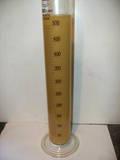Water washing titrated acid method
This is a processing method which allows the biodiesel to be water washed and dried within the processor, therefore it is ideal for those with limited space who may not have the room for separate tanks needed for conventional water washing. To work effectively there needs to be a minimal amount of soap in the biodiesel prior to washing. As such, it is best used with the two stage process with no titration
Contents
Introduction to the method
In all biodiesel processes, there is a need to remove the soaps, residual processing chemicals, residual glycerol and any other impurities prior to use. This is normally achieved by either washing them out with water in the water washing process or by driving off the methanol which may or not be recovered and allowing the other products to settle out.
Both of these methods take time and extra space.
The idea of this method is to safely water wash the biodiesel whilst still in the processor and immediately after draining the glycerol, with no risk of creating an emulsion.
The dreaded emulsion or 'Chicken Soup' is created when water and biodiesel mix in the presence of soap - this is, after all, why soap is used to wash oils and greases away with water. Clearly, if we intend to mix water with hundreds of litres of biodiesel and mix vigorously with a pump then the soaps need to be removed, or turned into something else, first.
Once the soaps are gone, the biodiesel can safely be washed and the impurities drained out. However, the biodiesel will still be wet and will need to be dried before use.
The process steps
Producing the biodiesel
The first step is to process the biodiesel by your chosen method. Whilst not essential, the two stage process with no titration method is recommended to minimise the amount of soap to be dealt with. Once as fully converted as possible, drain off all the glycerol. The fuel is now ready for the second step.
Determining the amount of acid needed
It is to carry out a titration of the fuel to ascertain the amount of acid needed to neutralise the residual chemicals and convert any soaps to free fatty acids. The titration fluid needs to be a known concentration of the acid you intend to use for this process. An indicator needs to be used which will clearly show and basic to acidic change around the neutral point.
Removing the soaps
The third step is to wash the biodiesel with the diluted acid in the processor by mixing with the pump. If using a weak acid like vinegar then this can be used neat or slightly diluted. If using a strong acid such as concentrated sulphuric acid then this need to be diluted with a substantial amount of water. After mixing, the processor is left to settle and then the acid/water/impurities mixture is drawn off and discarded.
Water washing
The fourth step is to carry out one or more water washes using clean water for short mix periods. This is done until the water comes out clean after settling. The water washes do not need to be mixed for long and will settle very quickly.
The picture on the right shows the progressively improving clarity of the water after each wash.
Drying the biodiesel
The fifth and final step is to dry the biodiesel, after which it is ready for use.
An example batch with calculations
First Sub-heading in second heading here
Second Sub-heading in second heading here
Text and photo content here ...
Delete if not required.
etc etc
Vinegar
Ok this is the method i used today,we tried universal indicator so we could tell when it changed to pH 7 as we wanted it neutral,we also tried methanol instead of IPA because the IPA we had was acidic
280 LITRE BATCH
(1) Titrate bio
(2) Titration fluid: white vinegar
(3) 25 ml of Methanol and some Universal Indicator,added 10 ml of bio shake, Green to Blue
(4) Then add the titration fluid in drips until the colour changes to green/yellow
(5) Multiply the result by the batch size to get the amount of acid needed e.g. if 0.1ml vinegar used to change colour to neutralize 10ml bio, 10ml vinegar neutralizes 1L 10x280 = 2.8L vinegar
(6) Add to 30 litres of water and mix with the bio for 25 minutes
(7) Take sample for reference
End the page with the headings below...
See also
Use if there are similar pages in the wiki, if not delete.
- Link within this wiki here
- Link within this wiki here
- Link within this wiki here
References
Use if you need to cite reference material you've used , if not delete.
- First ref here
- Second ref here
Further reading
Use if you can detail any useful reading matter, if not delete.
- Book details here
- Book details here
- Book details here
External links
Use if you can list any useful links on the internet, if not delete.
- Link outside this wiki here
- Link outside this wiki here
- Link outside this wiki here
Originator to sign and date here by using 4 "squiggle marks" sets the main category.



